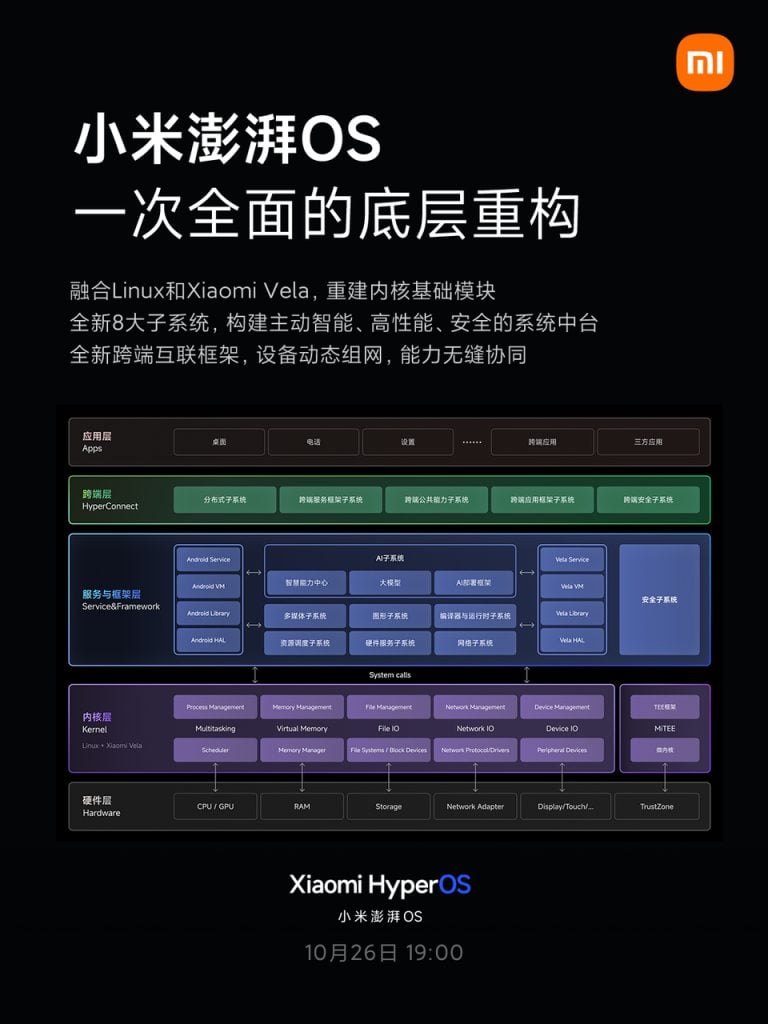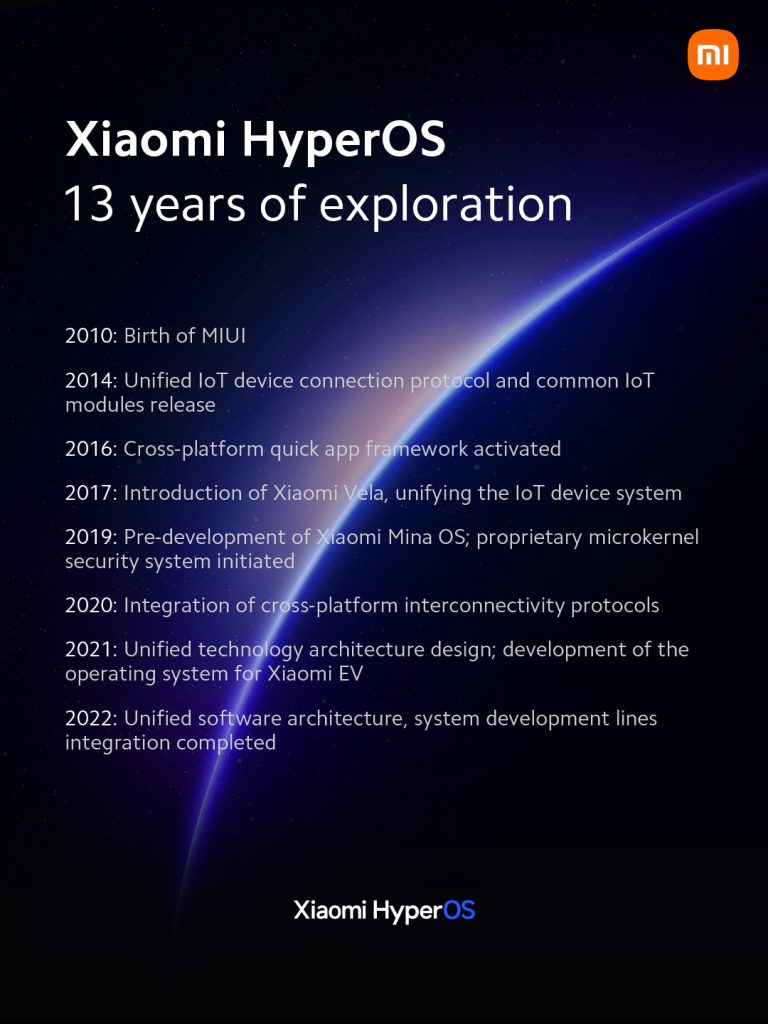Xiaomi’s HyperOS will be officially unveiled on October 26 at the Xiaomi 14 series launch event in China. Ahead of that, the company has started teasing its new software.
Earlier today, the firm shared its breakthrough in system software so far. Also, it revealed the architecture of its new software.
Let’s go through everything that’s known about HyperOS so far.

Just as we anticipated, HyperOS seems to be Xiaomi’s answer to Huawei’s HarmonyOS. As per the architecture shared by the company, the software comprises 5 layers.
The bottom layer is hardware, which is followed by the kernel layer. HyperOS uses both Linux and Vela kernels. For the unaware, Vela is Xiaomi’s IoT platform based on NuttX RTOS.
Thus, the third layer uses services and frameworks from Android as well as Vela. The second and third layers will likely vary between devices.
For instance, smartphones and tablets may use Linux and Android. On the other hand, IoT devices may utilize Vela. But nevertheless, both systems will be called ‘HyperOS’, just like how Huawei advertises HarmonyOS.
The fourth layer is HyperConnect. This will enable all devices to communicate with each other despite their third and second layers being different. Finally, the fifth layer consists of apps.
Though Xiaomi doesn’t mention it, we believe the third layer will also include GMS (Google Mobile Servies) for smartphones and tablets sold outside China.
Xiaomi says that HyperOS was 13 years in the making with the launch of MIUI in 2010. However, the actual research and development began 7 years ago with the introduction of Xiaomi Vela in 2017.
You can find all the OS breakthroughs by Xiaomi in the picture below, which also includes the development of the Xiaomi EV operating system.

RELATED:
- Xiaomi Watch S3 with HyperOS and replaceable bezels to launch on October 26
- Xiaomi Mini PC 2023 model with Intel Core i5-1340P CPU is available globally
- Xiaomi TV S Pro Mini LED 85-inch model launching on October 26
- Which one is better, OPPO Find N3 vs Xiaomi Mix Fold 3?
- Xiaomi 14 Pro Appears On Geekbench Ahead Of Launch







